
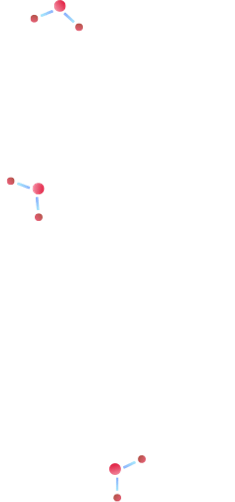
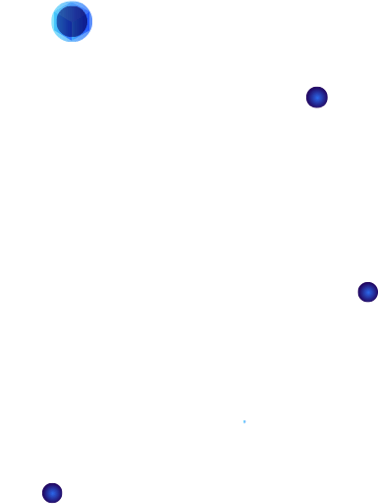
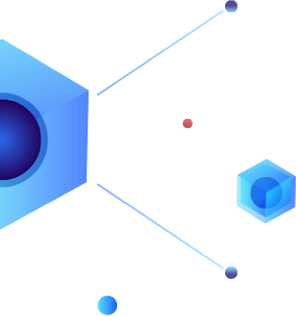
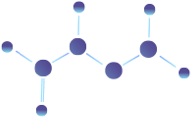



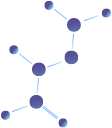

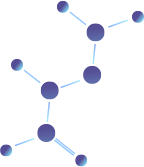

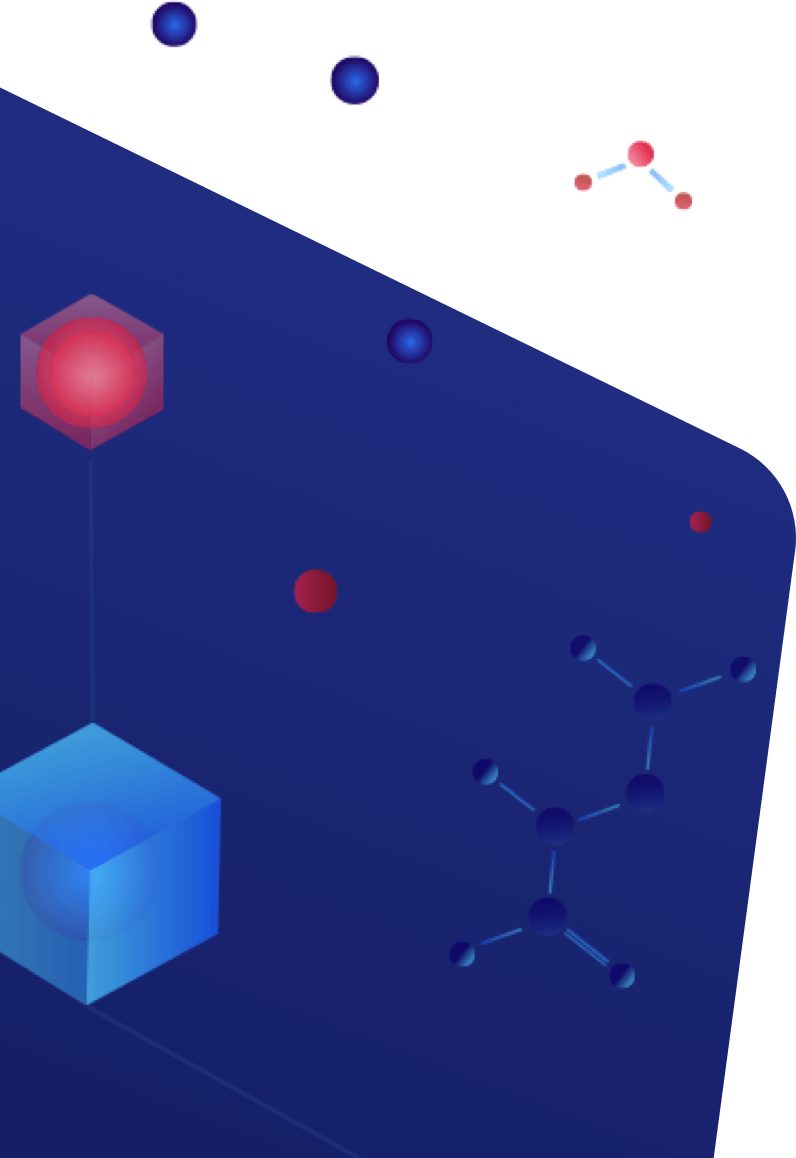

Get out of your element!
Convert CO2 into molecules to power bio-manufacturing in space.
Convert CO2 to Glucose
Help us discover ways to develop novel synthesis technologies that use carbon dioxide (CO2) as the sole carbon source to generate molecules that can be used to manufacture a variety of products, including "substrates" for use in microbial bioreactors.
Because CO2 is readily abundant within the Martian atmosphere, such technologies will translate into in-situ manufacturing of products to enable humans to live and thrive on the planet, and also be implemented on Earth by using both waste and atmospheric CO2 as a resource.
Process
Questions & Answers



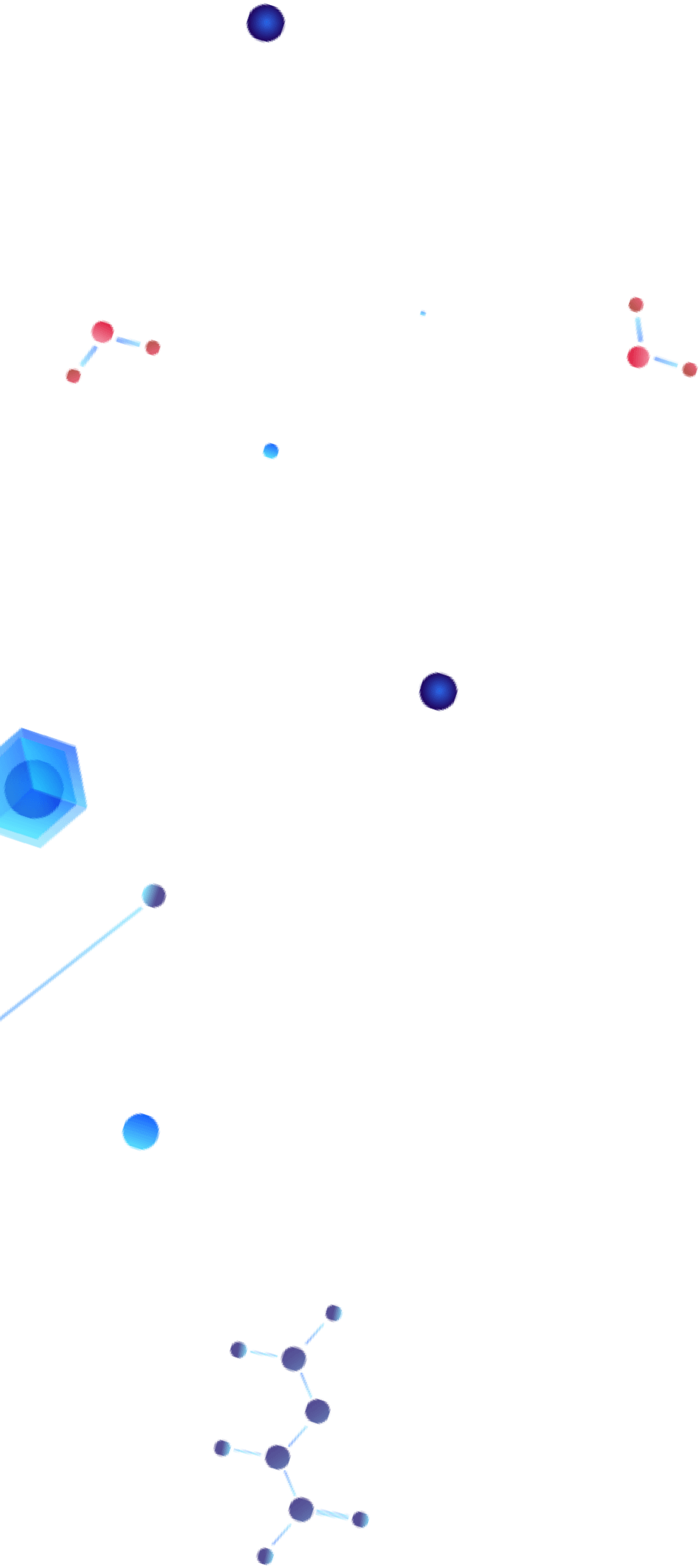

Results
Share the results
Share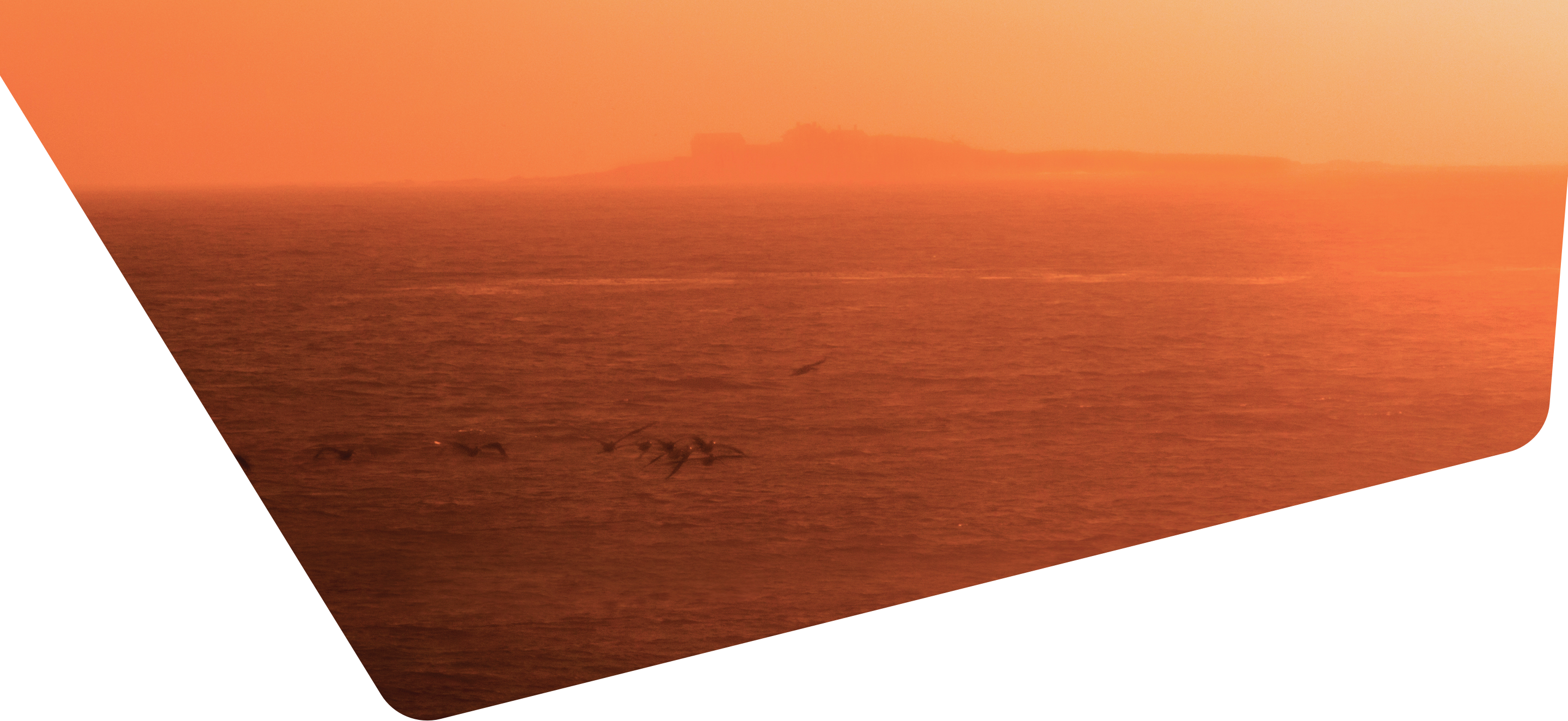







News & Updates






Meet the Judges




Timeline




Scoring
Trait Scoring Rubric



A Level Playing Field
To ensure fairness, once a valid application has been submitted for assessment, a minimum of five reviewers will grade each submission. Those reviewers will offer both scores and comments against each of four distinct traits. Each trait will be scored on a 0-5 point scale, in increments of 0.1. Those scores will combine to produce a total normalized score. Examples of possible scores for a trait are… 1.4, 3.7, etc.
The most straightforward way to ensure that everyone is treated by the same set of standards would be to have the same reviewers score every application; unfortunately, due to the number of applications that we may receive, that is not possible.
Since the same reviewers will not score every application, the question of fairness needs to be explained carefully. One reviewer scoring an application may take a more critical view, giving any assigned team a range of scores only between 1.0 and 2.0, as an example; meanwhile, another reviewer may be more generous and want to score every submission between 4.0 and 5.0.
For illustrative purposes, let’s look at the scores from two hypothetical reviewers:


The first reviewer is far more generous, as a scorer, than the second reviewer, who gives much lower scores. If your application was rated by the first reviewer, it would earn a much higher total score than if it was assigned to the second reviewer.
We have a way to address this issue. We ensure that no matter which reviewers are assigned to your team, each application will be treated fairly. To do this, we utilize a mathematical technique relying on two measures of distribution, the mean and the standard deviation.
The mean takes all the scores assigned by a reviewer, adds them up, and divides them by the number of scores assigned, giving an average score.
Formally, we denote the mean like this:

The standard deviation measures the “spread” of a reviewer’s scores. As an example, imagine that two reviewers both give the same mean (average) score, but one gives many zeros and fives, while the other gives more ones and fours. It wouldn't be fair, if we didn’t consider this difference.
Formally, we denote the standard deviation like this:

To ensure that the judging process is fair, we rescale all the scores to match the judging population. In order to do this, we measure the mean and the standard deviation of all scores across all judges. Then, we change the mean score and the standard deviation of each judge to match.
We rescale the standard deviation like this:

Then, we rescale mean like this:

Basically, we are finding the difference between both distributions for a single reviewer and those for all of the reviewers combined, then adjusting each score so that no one is treated unfairly according to which reviewers they are assigned.
If we apply this rescaling process to the same two reviewers in the example above, we can see the outcome of the final resolved and normalized scores. They appear more similar, because they are now aligned with typical distributions across the total population of reviewers.


We are pleased to answer any questions you have about how we seek to ensure a level playing field for every team. Please register today and join our discussion forums, where you can ask questions or seek clarification.



Official Rules
Thank you for your interest in the NASA CO2 Conversion Challenge (the “Competition”). The Competition is sponsored by NASA with platform support provided by RAMPIT. Please know that by participating in this Competition and in accordance with these Rules you are eligible to receive various forms of recognition and a possible award from NASA of up to $50,000 as a Winner of Phase 1: Concept Phase. The Rules governing this Competition ("Rules") are stated here as an extension of the Terms & Conditions ("Terms") for use of this Website. The full Terms are available for your review by accessing them on this website. The Rules constitute "Competition Terms and Conditions" under Clause 2.3 of the Terms. Capitalized words used but not defined in the Rules have meanings given to them in the Terms.
Please read these Rules and the Terms carefully, as they describe the conditions under which you are allowed to participate. As you participate, you may periodically be asked to recognize your acceptance of these Rules and the Terms by clicking "accept" at various pages on this website, but by continuing any use of this website you expressly consent to all of these Rules and the Terms.
SUBMISSION OF AN ENTRY IN THE CO2 CONVERSION CHALLENGE CONSTITUTES FULL AND UNCONDITIONAL AGREEMENT TO AND ACCEPTANCE OF THESE RULES.
NO PURCHASE OR PAYMENT IS NECESSARY TO ENTER OR TO WIN.
1. Eligibility
NASA welcomes applications from individuals, teams, and organization or entities that have a recognized legal existence and structure under applicable law (State, Federal or Country) and that are in good standing in the jurisdiction under which they are organized with the following restrictions:
- Individuals must be U.S. citizens or permanent residents of the United States and must be 18 years of age or older.
- Organizations must be an entity incorporated in and maintaining a primary place of business in the United States.
- Teams must be comprised of otherwise eligible individuals or organizations, and led by an otherwise eligible individual or organization.
- Teams must conduct their demonstration work in facilities based in the United States, to include Alaska, Hawaii, and the U.S. territories.
U.S. government employees may enter the competition, or be members of prize-eligible teams, so long as they are not acting within the scope of their Federal employment, and they rely on no facilities, access, personnel, knowledge or other resources that are available to them as a result of their employment except for those resources available to all other participants on an equal basis.
U.S. government employees participating as individuals, or who submit applications on behalf of an otherwise eligible organization, will be responsible for ensuring that their participation in the Competition is permitted by the rules and regulations relevant to their position and that they have obtained any authorization that may be required by virtue of their government position. Failure to do so may result in the disqualification of them individually or of the entity which they represent or in which they are involved.
Foreign citizens may only participate through an eligible US entity as
- An employee of such entity
- A full-time student of such entity, if the entity is a university or other accredited institution of higher learning,
- An owner of such entity, so long as foreign citizens own less than 50% of the interests in the entity, OR
- A contractor under written contract to such entity.
No Team Member shall be a citizen of a country on the NASA Export Control Program list of designated countries in Category II, Countries determined by the Department of State to support terrorism. The current list of designated countries can be found at http://oiir.hq.nasa.gov/nasaecp/. As of July 12, 2018, only 4 countries are in category II (Iran, North Korea, Sudan, and Syria). Please check the link for latest updates.
A team-designated team lead shall be responsible for the actions of and compliance with the rules, including prize eligibility rules, by all members of his or her team.
2. Ineligible persons or entities
Federal entities or Federal employees acting within the scope of their employment are not eligible to win an award.
Employees of NASA, RAMPIT, The Common Pool, LLC, and any of their subsidiaries and affiliates, and immediate family members (spouse, parent, child, sibling and their respective spouses, regardless of where they live) or persons living in the same households of such employees, are not eligible.
3. No use of government funds
No U.S. government funds may be used to prepare your submission.
4. Distribution of an Award to a Team
If a team of individuals and/or entities is selected as a Winner of Phase 1: Concept, one payment of $50,000 will be made to the team lead of the winning team that submitted the application. Team leads will be required to confirm contact information provided in the participation agreement after notification of the team winning. Competition Sponsor will contact the team leads to request additional information needed to execute the Award.
5. Distribution of an Award to an Organization
If an organization is selected as a Winner of Phase 1: Concept, one payment of $50,000 will be made to the team lead of the winning team that submitted the application. You warrant that the appropriate officers, executives, managers, or other persons who have the authority to approve participation in this competition have approved Your Entry and You understand that these terms will be binding on both You and your Entity. Furthermore, You understand that if You enter without obtaining the appropriate approval, NASA may, in its sole discretion, disqualify your Entry. Finally, if an entity is selected to receive an award, an officer or person entitled to bind the entity will be required to validate that You are entitled to receive the award on the behalf of the entity and the officer or person entitled to bind the entity must provide the appropriate information for payment of the award.
6. Treatment and Use of Intellectual Property
Each application should reflect the anticipated ownership, use, and licensing of any intellectual property. You represent and warrant that your Entry is an original work created solely by You, that You own all Intellectual Property in and to the Entry, and that no other party has any right, title, claim or interest in the Entry, except as expressly identified by You to us in writing in Your application. NASA claims no right, title, or interest to any such intellectual property solely as a consequence of Your participation in the competition, including the winning of a prize. NASA reserves the right to share any submissions received with its civil servants and contractors, and reserves the right to approach individual participants about any future opportunities at the conclusion of the competition.
7. Other Rules
7.1 Your application must be in English.
7.2 You must complete registration to participate in the Competition. Individuals must be 18 years of age or older at the time of entry to participate either individually or by representing an applicant organization. You cannot reside in nor be governed by countries that are prohibited by law, regulation (including United States or other applicable export laws and regulations), treaty or administrative act from entering into trade relations (including export of technology) with the United States of America or its citizens.
7.3 Your Entry should meet the application requirements stipulated on this website. You are required to register in advance of any deadlines for the submission of an Entry, and You must comply with all other deadlines posted on this website. Your Entry may not, in the sole and unfettered discretion of NASA and/or RAMPIT, contain obscene, provocative, defamatory, or otherwise objectionable or inappropriate content. NASA reserves the right to cancel, modify or suspend Competition in whole or in part without liability to You. NASA and/or RAMPIT also reserves the right to disqualify You from participating.
7.4 By participating in the CO2 Conversion Challenge, You represent, warrant, and agree that:
- You are the sole author, creator, and owner of the Entry;
- the Entry is not the subject of any actual or threatened litigation or claim;
- the Entry does not and will not violate or infringe upon the intellectual property rights, privacy rights, publicity rights, or other legal rights of any third party;
- the Entry does not and will not contain any harmful computer code (sometimes referred to as "malware," "viruses" or "worms"); and
- the Entry, and Your use of the Entry, does not and will not violate any applicable laws or regulations, including, without limitation, applicable export control laws and regulations of the United States and other jurisdictions. If the Entry includes any third party works (such as third-party content or open source code), You must provide the Competition Sponsor with all appropriate licenses and releases for such third party works. In the event You cannot provide all such required licenses and releases, the Competition Sponsor reserves the right, in the Competition Sponsor's sole discretion, to disqualify the applicable Entry.
7.5 You may participate by registering, but You may not register more than one true and uniform identity; multiple registrations for a Competitor using multiple identities are not allowed. NASA and/or RAMPIT reserve the right to disqualify any Entry made by a Competitor violating this limitation, regardless of whether all of the respective parties had knowledge of such violation. You may only submit one Entry.
7.6 The application requirements for your Entry are clearly described on this website. Your Phase 1: Concept entry will be assessed initially by five reviewers, who will be assigned to score your Entry either randomly or after considering any potential conflicts of interest, using the scoring rubric and any other judging criteria that are also described on this website. In cases where a Judge indicates any potential conflict of interest, the Entry will be assigned to another Judge. Those Judges, each of whom is named on this website, will be responsible for scoring your Entry.
Once a rank order of Entries has been calculated in Phase 1: Concept, up to five top Competitors will be named as Winners.
7.7 The decisions according to the rules by the judges are considered to be final. Only in extraordinary circumstances can an appeal of a penalty be proposed. If the appeal process is chosen, the TEAM LEADER must submit the appeal in writing to the Ombudsman within 30 minutes of the incident and prior to prizes being awarded. The final decision of the appeal will be rendered by the Ombudsman before the award of prizes and shall prevail.
7.8 While RAMPIT, LLC (“RAMPIT”) is providing an online platform for your participation, RAMPIT is not responsible for the payment of any Award(s). Payment of any Award(s) is the sole responsibility of NASA and its designees, and under the Terms each participant has agreed to look solely to NASA, as the Competition Sponsor, for the payment of any Award.
7.9 By submitting your Entry, you agree to release, discharge and hold harmless NASA, The Common Pool, LLC, and RAMPIT and their partners, affiliates, subsidiaries, advertising agencies, agents and their employees, officers, directors and representatives from any Loss arising out of your participation in Competition and the acceptance and use, misuse, or possession of any Award(s). Neither NASA, The Common Pool, LLC, nor RAMPIT assume responsibility for any error, omission, interruption, deletion, defect, or delay in operation or transmission; communications line failure; theft or destruction of or unauthorized access to Competition entries or entry forms; or alteration of entries or entry forms. Neither NASA, The Common Pool, LLC, nor RAMPIT are responsible for any problems with or technical malfunction of any telephone network or lines, computer online systems, servers or providers, computer equipment, software, failure of any entry to be received on account of technical problems or traffic congestion on the Internet or any website, human errors of any kind, or any combination thereof, including any injury or damage to competitors’ or any other persons’ computers related to or resulting from participation, uploading or downloading of any materials related to this Competition. In the event of a dispute about the identity of any Competitor, an online registration will be declared as if made by the authorized account holder of the e-mail address submitted at time of entry.
7.10 THIS COMPETITION IS VOID WHERE PROHIBITED. Competitors agree that this Competition shall be subject to and governed by the laws of the United States of America and the forum of any dispute shall be in the courts of the United States of America.
7.11 If for any reason Competition is not capable of running as planned, due to infection by computer virus, bugs, worms, Trojan horses, denial of service, tampering, unauthorized intervention, fraud, technical failures or any other causes beyond the control of RAMPIT that corrupt or affect the administration, security, fairness, integrity, or proper conduct of this Competition, RAMPIT reserves the right, at its sole discretion, to disqualify any individual(s) who tamper with the process, and/or to cancel, terminate, modify, or suspend the Competition. If NASA and/or RAMPIT terminates the Competition, it will not retain any rights in the submitted Entries.
7.12 The Competition Sponsor reserves the right in its sole discretion to disqualify any Competitor who is found to be tampering with the entry process or the operation of the CO2 Conversion Challenge, to be acting in violation of these Rules, or to be acting in an unsportsmanlike or disruptive manner, or with the intent to disrupt or undermine the legitimate operation of the CO2 Conversion Challenge, or to annoy, abuse, threaten, or harass any other person.
7.13 Entry into the CO2 Conversion Challenge does not constitute entry into any other NASA competition, RAMPIT competition, or promotion that may be offered by the Competition Sponsor and/or its affiliates.
7.14 NASA and/or RAMPIT reserves the right to disqualify any Competitor who violates these RULES, the Terms and any standards of behavior expressed or implied in them.
7.15 The names of the Winners will be posted on this website for such period of time as the Competition Sponsor deems reasonable.
7.16 NASA and/or RAMPIT reserve the right to alter the rules and/or schedule if deemed necessary. Teams will be notified of changes and given the opportunity to voice concerns or request modifications. Final authority for all changes will rest with NASA. Requests for rules clarifications should be sent to [email protected]. NASA and/or RAMPIT will hold confidential any questions that are designated as team proprietary. NASA and/or RAMPIT will ensure that answers do not give any team an unfair advantage.
Contact Information:
You may contact us with any questions or comments about these RULES. Please enter CO2 Conversion Challenge in the subject line of your email. You may reach us at: [email protected].



About the Challenge
NASA envisions this competition having two phases with a total prize purse of up to $1 million. Phase 1 (the current phase) is the Concept Phase with a prize purse of up to $250,000.The initiation of Phase 2, a Demonstration Challenge with a prize purse of up to $750,000, is contingent on the emergence of promising submissions in Phase 1 that demonstrate a viable approach to achieve the Challenge goals. The official rules for Phase 2 will be released prior to the opening of Phase 2.
NASA Centennial Challenges were initiated in 2005 to directly engage the public in the process of advanced technology development. The program offers incentive prizes to generate revolutionary solutions to problems of interest to NASA and the nation. The program seeks innovations from diverse and non-traditional sources. Competitors are not supported by government funding and awards are only made to successful teams when the challenges are met.
The goal of the program is to stimulate innovation in basic and applied research, technology development, and prototype demonstration that have the potential for application to the performance of the space and aeronautical activities of the administration.
In keeping with the spirit of the Wright Brothers and other American innovators, the Centennial Challenge prizes are offered to independent inventors including small businesses, student groups and individuals. These independent inventors are sought to generate innovative solutions for technical problems of interest to NASA and the nation and to provide them with the opportunity to stimulate or create new business ventures. For more information on NASA Centennial Challenges or to learn about other Challenges, visit NASA.gov/winit



Challenge Background
Why This Challenge Now?
Future planetary habitats on Mars will require a high degree of self-sufficiency. This requires a concerted effort to both effectively recycle supplies brought from Earth and use local resources such as CO2, water and regolith to manufacture mission-relevant products. Human life support and habitation systems will treat wastewater to make drinking water, recover oxygen from CO2, convert solid wastes to useable products, grow food, and develop equipment and packaging to allow reuse in alternate forms. In addition, In Situ Resource Utilization (ISRU) techniques will use available local materials to generate substantial quantities of products to supply life support needs, propellants and building materials, and support other In-Space Manufacturing (ISM) activities.
Many of these required mission products such as food, nutrients, medicines, plastics, fuels, and adhesives are organic and are comprised mostly of carbon, hydrogen, oxygen, and nitrogen molecules. These molecules are readily available within the Martian atmosphere (CO2, N2) and surface water (H2O), and could be used as the feedstock to produce an array of desired products. While some products will be most efficiently made using physicochemical methods or photosynthetic organisms such as plants and algae, many products may best be produced using heterotrophic (organic substrate utilizing) microbial production systems. Terrestrially, commercial heterotrophic bioreactor systems utilize fast growing microbes combined with high concentrations of readily metabolized organic substrates, such as sugars, to enable very rapid rates of bio-product generation.
The type of organic substrate used strongly affects the efficiency of the microbial system. For example, while an organism may be able to use simple organic compounds such as formate (1- carbon) and acetate (2-carbon), these “low-energy” substrates will typically result in poor growth. In order to maximize the rate of growth and reduce system size and mass, organic substrates that are rich in energy and carbon, such as sugars, are needed. Sugars such as D-Glucose, a six-carbon sugar that is used by a wide variety of model heterotrophic microbes, is typically the preferred organic substrate for commercial terrestrial microbial production systems and experimentation. There are a wide range of other compounds, such as less complex sugars and glycerol that could also support relatively rapid rates of growth.
To effectively employ microbial bio-manufacturing platforms on planetary bodies such as Mars carbon substrates must be made on-site using local materials. However, generating complex compounds like glucose on Mars presents an array of challenges. While sugar-based substrates are inexpensively made in bulk on Earth from plant biomass, this approach is currently not feasible in space. Current physicochemical processes such as photo/electrochemical and thermal catalytic systems are able to make smaller organic compounds such as methane, formate, acetate and some alcohols from CO2; however, these systems have not been developed to make more complex organic molecules, such as sugars, primarily because of the difficult technical challenges and the availability of lower cost alternatives associated with obtaining sugars on Earth. Novel research and development is required to create the physicochemical systems required to directly make more complex molecules from CO2 in space environments. The advancements in the generation of suitable microbial substrates will enable the making of complex organic compounds from CO2 that could also serve as feedstock molecules in traditional terrestrial chemical synthesis and manufacturing operations.
The CO₂ Conversion Challenge is devoted to fostering the development of CO2 conversion systems that can effectively produce singular or multiple molecular compounds identified as desired microbial manufacturing ingredients and/or that provide a significant advancement of physicochemical CO2 conversion for the production of useful molecules.



Technical Specifications
Challenge Objective
The overall objective of this challenge is to demonstrate a solely physicochemical (no biological processing) process/system that uses CO2 as the only carbon source to produce selected carbon-based molecular compounds. The compounds of interest are provided in Table 1, with an associated preference factor between 0 and 10, with D-glucose being the most preferred. The source CO2 and hydrogen can be supplied from a commercially available pure gas (i.e., tanked CO2 and H2), or verifiably obtained from an alternate source (e.g., H2 from water electrolysis). To increase the potential for use in space missions, scalable, low mass/power/volume systems are sought. Likewise, the ability to make target compounds at high efficiency and specificity, and with minimal contaminants and/or toxic by-products, is preferred.
Table 1. Challenge target compounds and associated preference factor.
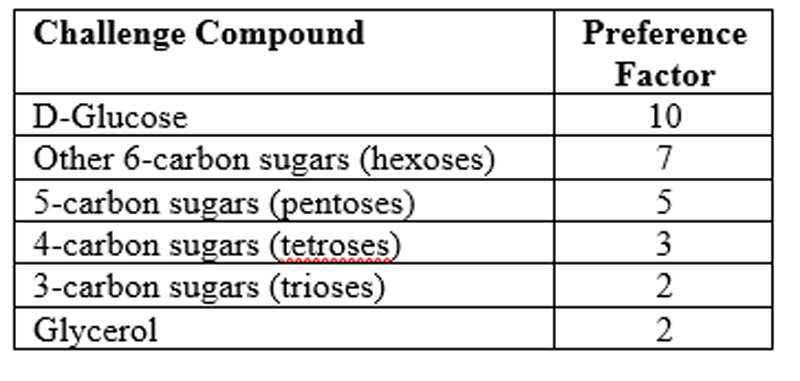



Application
Please read all of the application requirements before completing each section. All applications must be submitted in English. Portions of your application, including the Proposal Title and the Technical Abstract, may be published on this website; the remainder of your application will only be viewed by prize administrators and judges.
Be sure to review your application as the judges will see it and confirm your changes have been saved. When you have completed all of the requirements, a message will be displayed on the screen. At that point, you can submit your final application. Once you have submitted the application, you will no longer be able to make changes.
You must submit your application no later than Thursday, February 28, 2019, at 5:00 PM Central.
A. INTRODUCTION
PROPOSAL TITLE (5 words)
Please provide a title for your proposal. This title may be displayed on the challenge website post-submission so please be descriptive.
[TEXT BOX: 5 words maximum]
TECHNICAL ABSTRACT (50 words)
Provide a brief summary description of the physicochemical (no biological components) process/system that uses CO2 as the sole carbon source to produce selected carbon-based molecular compounds you are proposing to construct. Your Technical Abstract should be contained in a single paragraph. Focus on delivering a compelling overview so that the Evaluation Panel members assigned to score your application will want to read more. Therefore, the paragraph should not require any other context to explain clearly your proposed technology. This is your opportunity to make a strong first impression, so make every word count.
[TEXT BOX: 50 words maximum]
B. ABOUT YOU OR YOUR TEAM
The following information is required to capture a basic understanding of the leadership, structure, vision, and capabilities of the people working on this project. Individuals, teams of individuals, and organizations may apply. While government agencies cannot register or apply, individuals affiliated with government agencies can be recognized as part of a team so long as no governmental resources are used to develop the submission.
PROOF OF CITIZENSHIP OR PERMANENT RESIDENCY
In order to be eligible for an award, you must be a citizen or permanent resident of the United States and provide proof of that status. The following documents can be used to establish your status.
Acceptable Documents for U.S. Citizenship
- Official Birth Certificate issued by a U.S. state, jurisdiction or territory (Puerto Rico, U.S. Virgin Islands, Northern Mariana Islands, American Samoa, Swain's Island, Guam)IMPORTANT: Puerto Rican birth certificates issued before July 1, 2010 will not be recognized as proof of Lawful U.S. Citizenship beginning November 1, 2010. The government of Puerto Rico has provided information for citizens to apply for new birth certificates.
- U.S. Government-issued Certified Birth Certificate
- U.S. Certificate of Birth Abroad (DS-1350 or FS-545)
- Report of Birth Abroad of a Citizen of the U.S. (FS-240)
- Valid, unexpired U.S. Passport
- Certificate of Citizenship (N560 or N561)
- Certificate of Naturalization (N550, N570 or N578)
- U.S. Citizen Identification Card (I-197, I-179)
Acceptable Documents for Lawful Permanent Resident Status
- Permanent Resident Alien Card (I-551)
- Foreign passport stamped by the U.S. Government indicating that the holder has been "Processed for I-551"
- Permanent resident Re-entry Permit (I-327)
- Arrival Departure Form I-94 with “Temporary I-551” stamp and holder’s photograph affixed
- Travel Document issued to Permanent Residents (I-327)
- Travel Document issued to Refugees (I-571)
- Form I-94 stamped with one of the following statuses: Asylee, Parolee or Parole, Refugee, Asylum, HP-humanitarian parolee or PIP-public interest parolee
Upload a copy of one of these documents to verify that you are a citizen or permanent resident of the United States.
[UPLOAD PDF FILE]
PROOF OF INCORPORATION AND PRIMARY PLACE OF BUSINESS
In order to be eligible for an award, you must provide proof that your organization is incorporated in the United States. and that your primary place of business is within the United States. The following documents can be used to establish your primary place of business and place of incorporation.
Acceptable Documents to Prove Primary Place of Business
Property Tax Receipt
Posted Mail with name of applicant
Utility Bill
Lease Agreement
Insurance Card
Voter Registration Card
College Enrollment Papers
Acceptable Documents to Prove Place of Incorporation
Articles of Incorporation, Charter, or similar documentation
Upload a copy of your documents to verify that your organization is incorporated in the United States and that your primary place of business is within the United States.
[UPLOAD PDF FILE]
PROOF OF LIABILITY INSURANCE
In order to participate in this Challenge, you must demonstrate that you have at least $250K liability insurance coverage. You may upload a certificate or other evidence of your insurance coverage.
[UPLOAD PDF FILE]
TEAM ORGANIZATION (250 words)
If you are part of a team that consists of individuals or a member of an organization that is submitting a proposal, each team member must fulfill a specific purpose in developing your proposed solution. Let us know how your team is structured by including a document that identifies each member, affiliation, and role in project. You may include an organizational chart. If you are an individual who is submitting a proposal, please enter “not applicable.”
[TEXT BOX: 250 words maximum]
C. YOUR TECHNOLOGY
This is your opportunity to provide the details of your proposed technology to the NASA CO2 Conversion Challenge. Be sure to emphasize how your proposed solution aligns with the four traits that will be used to assess each valid application (see Trait Scoring Rubric).
Each solution must demonstrate a clear understanding of the challenges associated with the development of CO2 conversion systems to produce compounds from the defined list that serve as an energy source for microbial manufacturing systems, and why you believe your approach may unlock the solution.
TECHNOLOGY OVERVIEW (750 words)
Describe the physicochemical system that you plan to develop, the CO2 conversion process the system uses and its chemistry, including any consumable chemicals, catalysts, etc. List the targeted compounds and their characteristics (concentration, solid/liquid, pH, and any other applicable information). The system should be able to make at least one compound in Table 1, understanding that systems that can produce the more favored compounds will be ranked higher. To be considered for the prize, the Concept must indicate a viable path to success, and be supported by rationale obtained from basic and/or applied research.
[TEXT BOX: 750 words maximum]
ASSUMPTIONS (200 words)
What assumptions have you made about the development of this technology? Explain your understanding of the necessary operations or tactics critical to overcoming implementation challenges. You must include supporting calculations where applicable.
[TEXT BOX: 200 words maximum]
DESIGN SCHEMATIC
Upload a preliminary design schematic that represents the physicochemical system you envision constructing in order to demonstrate the production of selected carbon-based molecular compounds. The system should be scaled such that, at a minimum, it generates sufficient product within a continuous 7 hour period to allow analytical characterization/verification using conventional analytical methods.
[UPLOAD PDF FILE]
PHYSICAL PROPERTIES (500 words)
Describe the physical characteristics of your system, to include the major hardware components, process information and component level detail as deemed relevant to the system solution. What is the projected system mass/energy/size? What is the anticipated CO₂-to-product(s) conversion efficiency rate? What is the targeted production rate?
[TEXT BOX: 500 words maximum]
DATA ANALYSIS
Upload a report with supporting calculations and any preliminary laboratory analysis data you have to support the design and operation of the proposed CO₂ conversion process.
[UPLOAD PDF FILE]
DATA ANALYSIS NARATIVE (250 words)
Provide a narrative description to the data analysis that you uploaded. Are there specific areas that need additional explanation? Take the time to anticipate any questions the Evaluation Panel might have about your preliminary results.
[TEXT BOX: 250 words maximum]
INTELLECTUAL PROPERTY (100 words)
Explain who owns the intellectual property of your proposed technology. If you are building on existing or off-the-shelf technology, detail the permissions you have to use that technology. If you are part of a team, indicate which team members own the intellectual property.
[TEXT BOX: 100 words maximum]
D. YOUR PROJECT PLAN
Assuming you will have up to twelve months to build a functioning system, identify the milestones for building your technology in chronological order.
PROJECT MILESTONES (150 words)
Describe the milestones and timeline needed to build your prototype demonstration system.
[TEXT BOX: 150 words maximum]
E. YOUR VIDEO
Upload a brief video to introduce your team, discuss why you are interested in this challenge, your expertise/experience, available facilities, and other general information related to your interest and ability to succeed in this challenge. You will upload a short digital film using YouTube. Set the Privacy Settings on your video to Public or Unlisted; do not set them to Private. Video submissions must follow these guidelines:
- A length of no more than 90 seconds.
- One person (two maximum) should present himself or herself during the video.
- Focus on your concept; it is not necessary to produce a sophisticated video.
- Your video must be in English.
Here are general suggestions for delivering a high-quality video:
- Introduce yourself and your organization and/or team.
- Discuss why you are interested in this challenge.
- What is your expertise or experience? What facilities do you have available?
- Give us your best description of your ability to succeed in this challenge.
[TEXT BOX: YouTube ID]




Privacy Policy
Welcome and thank you for your interest in the CO2 Conversion Challenge. This Website is managed by RAMPIT, LLC, ("RAMPIT") and all provisions governing your participation in this Competition (including the Services provided through it) are described in the Terms and Conditions ("Terms"). This Privacy Policy is incorporated into and is a part of the Terms. Capitalized language used, but not defined in this Privacy Policy, may have the meanings given to them elsewhere in the Terms. Please read this Privacy Policy carefully, as it describes what information we gather from you, and how we may use and disclose that information. By registering a User Account and/or by accessing or using this Website, you expressly consent to the information handling practices described in this Privacy Policy.
The Information RAMPIT Collects:
- User-Provided Information: You may provide to RAMPIT what is generally called "personally identifiable information” (such as your name, email address, postal mailing address, home/mobile telephone number, etc.) while using this Website, such as when you register, when you submit Entries and/or when you provide information in order to compete to receive any Award(s).
- "Cookies" Information: When you use this Website, we may send one or more cookies – small text files containing a string of alphanumeric characters – to your computer. RAMPIT may use both session cookies and persistent cookies. A session cookie disappears after you close your browser. A persistent cookie remains after you close your browser and may be used by your browser on subsequent visits to this Website. Persistent cookies can be removed. Please review your web browser "Help" file to learn about the proper way to modify your cookie settings. Please note that if you delete or choose not to accept cookies from this Website, you may not be able to utilize the features of this Website to their fullest potential.
- "Flash Cookies" Information: Flash and other browser plugin applications use technology similar to cookies to enable the storage and recall of settings, preferences and usage data, and other information. Because they are stored in separate software applications, these types of cookies are not managed through your web browser's cookie management interface. RAMPIT may employ such techniques, including Adobe Flash Cookies (also called "Local Shared Objects") to track information related to your interaction with features of this Website through which Flash-based content is provided. You can access various Flash Cookie management tools and configure certain privacy and security settings for your Flash Player from Adobe's web site directly.
- "Automatically Collected" Information: When you use this Website or open one of our HTML emails, we may automatically record certain information from your web browser by using different types of technology, including "clear gifs" or "web beacons." This "Automatically Collected" information may include Internet Protocol address ("IP Address") or other device address or ID, web browser and/or device type, the web pages or sites that you visit just before or just after this Website, the pages you view on this Website, and the dates and times that you visit this Website.
- Linked Website Information: When you link an account you may have on a third party service (such as any third party social networking site) to your Account on this Website, RAMPIT may store the access credentials you provide and will have access to and may collect any information you may have stored in connection with that account that you have configured and those services to make available, including personally identifiable information and friends lists. By linking your accounts in this manner, you are authorizing RAMPIT as your agent to access and use your account on the third-party service in connection with your use of this Website.
- Third-Party Web Beacons: We may also implement third party content on this Website that uses "clear gifs," "web beacons," or other similar techniques, which allow the third-party content provider to read and write cookies (including Flash Cookies) to your browser, or implement similar tracking mechanisms, in connection with your viewing of that third party content displayed on this Website. This information is collected directly by the third party, and RAMPIT does not participate in that data transmission. Information collected by third parties in this manner is subject to that third party's own data collection, use, and disclosure policies.
- Information from Other Sources: We may also obtain information, including personally identifiable information, from third parties and sources other than this Website, such as other Users who import your email address. We may also receive information from third party services that provide a mechanism to expose information you have provided to such third party through the use of an application program interface (API), such as Facebook Connect and the Google API. If we combine or associate information from other sources with personally identifiable information that we collect through this Website, we will treat the combined information as personally identifiable information in accordance with this Privacy Policy.
The Way RAMPIT Uses Information:
- RAMPIT uses the information that you provide or that we collect to operate, maintain, enhance, and provide all of the features and services found on this Website. We will use your email address to contact you with respect to Entries, any Award, and otherwise in connection with Competitions, for any administrative and customer service purposes, to address intellectual property infringement, rights of privacy, or defamation issues, or regarding Postings.
- RAMPIT uses all of the information that you provide or that we collect to understand and analyze the usage trends and preferences of our Users, to improve the way this Website works and looks, and to create new features and functionality.
- RAMPIT may use "Automatically Collected" information and "cookies" information to: (a) personalize our services, such as remembering your information so that you will not have to re-enter it during your visit or the next time you visit this Website; (b) provide customized third party content and information; (c) monitor and analyze the operation and effectiveness of this Website and related activities; (d) monitor aggregate site usage metrics such as total number of visitors and pages viewed; and, (e) track your status in any Competitions or other activities.
- RAMPIT may use your email address or other personally identifiable information to send you: i) messages about this Website or communications from other Users; ii) messages related to this Website and the activities of third parties with whom we work; and, iii) messages on behalf of other Users, who think that you may be interested in this Website. You will have the ability to opt-out of receiving any such communications, either through links provided in the messages, or by updating your Account settings through this Website.
When RAMPIT Discloses Information:
We are not in the business of selling your information. We do, however, disclose your personally identifiable information in a variety of circumstances in connection with developing and maintaining this Website and operating or supporting Competitions. For example:
- By its nature, this Website enables Users to communicate in a variety of ways. This also applies to information you choose to make available through features that connect to third party services, if applicable. Once you make your personally identifiable information available, it may be collected and used by the recipients without restriction. We urge Users to exercise common sense, prudence and good judgment about what personal information to make available to others through this Website.
- RAMPIT may disclose your personally identifiable information to the Competition Sponsor and/or Competitors, as applicable, to enable your participation in and the operation of Competitions.
- RAMPIT works with third party service providers to provide general website hosting, specialized Content hosting (e.g. the hosting of video Content), maintenance, and other services. These third parties may have access to or process your personally identifiable information as a result of performing the services they were engaged to perform.
- RAMPIT may also disclose your information if required to do so by law or in the good-faith belief that such action is necessary or useful to comply with applicable laws, to respond to a court order, judicial or other government subpoena or warrant, or to otherwise assist or cooperate with law enforcement activity or other similar activities in connection with internal or coordinated fraud detection and prevention, and the protection or enforcement of third party rights.
- RAMPIT works to promote a safe and reliable service for all Users. We reserve the right to disclose your information that we believe, in good faith, is appropriate or necessary to take precautions against liability; to protect RAMPIT and others from fraudulent, abusive, predatory, or unlawful uses or activity; to investigate and defend ourselves against any third-party claims or allegations; to protect the security or integrity of this Website; or to protect or vindicate the rights, property, or personal safety of RAMPIT, our Users, or others.
Your Choices
You may, of course, decline to share certain personally identifiable information with RAMPIT, in which case RAMPIT may not be able to provide to you some of the features and functionality found on this Website. Please note that we may retain all information you submit for a variety of purposes, including backups and archiving, prevention of fraud and abuse, and analytics.
To protect your privacy and security, we take reasonable steps to verify your identity before granting you account access or making corrections to your information. YOU ARE RESPONSIBLE FOR MAINTAINING THE SECRECY OF YOUR UNIQUE PASSWORD AND ACCOUNT INFORMATION AT ALL TIMES.
We may now or in the future make certain tools and features for configuring your privacy settings available to you through this Website, but any such features and settings we may provide do not guarantee the anonymity or confidentiality of any information, including personally identifiable information and Postings you provide or submit to this Website.
Third-Party Websites:
This Website contains links to Websites and services provided by third parties. Any personally identifiable information you provide on third party sites or services is provided directly to that third party and is subject to that third party's policies, if any, governing privacy and security. We are not responsible for the content or privacy and security practices and policies of third party sites or services to which links are displayed on this Website. We encourage you to learn about third parties' privacy and security policies before providing them with personally identifiable information. We do not sell or share your information with online marketers.
Our Commitment to Children's Privacy:
Protecting the privacy of children is especially important. For that reason, RAMPIT does not knowingly collect or maintain personally identifiable information from persons under 13 years-of-age, and no part of this Website is directed to persons under 18 years-of-age. IF YOU ARE UNDER 18 YEARS OF AGE, THEN PLEASE DO NOT USE OR ACCESS THIS WEBSITE FOR THE PURPOSES OF THE COMPETING AT ANY TIME OR IN ANY MANNER. If RAMPIT learns that personally identifiable information of persons less than 13-years-of-age has been collected on this Website without verifiable parental consent, then RAMPIT will take the appropriate steps to delete this information. If you are a parent or guardian and discover that your child under the age of 13 has obtained a User Account on this Website, then you may alert RAMPIT at [email protected] and request that RAMPIT delete that child's personally identifiable information from its systems.
Our Commitment to Data Security:
RAMPIT uses a variety of physical, managerial, and technical safeguards designed to improve the security of our systems and your personally identifiable information. We cannot, however, ensure or warrant the security of any information you transmit to RAMPIT, nor can we guarantee that such information may not be accessed, disclosed, altered, or destroyed by breach of any of our physical, technical, or managerial safeguards. You transfer your information to RAMPIT at your own risk.
If RAMPIT learns of a security systems breach, then we will attempt to notify you electronically so that you can take appropriate protective steps. Depending on where you live, you may have a legal right to receive notice of a security breach in writing. If you'd like to receive such a notice, please notify us at [email protected].
International Visitors
Your information may be stored and processed in any country in which RAMPIT and its affiliates maintain facilities. In this regard, or for purposes of sharing or disclosing data in accordance with this Privacy Policy, RAMPIT reserves the right to transfer, store, and process your information outside of your country. Your acceptance of the Terms includes your consent to any such transfer, storage, and processing of your information outside of your country.
Changes and Updates to this Privacy Policy
Please revisit this page periodically to stay aware of any changes to this Privacy Policy, which may be revised at RAMPIT's sole discretion, as provided in the Terms. Note that our amended Privacy Policy will become effective on a going forward basis as set forth in the Terms, except that: (i) unless you agree otherwise, we will use your personally identifiable information in the manner described in the Privacy Policy in effect when we received that information; and, (ii) if you do not agree with any changes to the Privacy Policy, you must terminate your participation and cease use of this Website. Your continued use of this Website after a revised Privacy Policy has become effective indicates that you have read, understood, and agreed to the current version of the Privacy Policy.
RAMPIT Contact Information
Please contact RAMPIT with any questions or comments about this Privacy Policy, your personally identifiable information, our use and disclosure practices, or your consent choices by email: [email protected].



Terms & Conditions
RAMPIT, LLC (“RAMPIT”) provides an online platform for skill-based competitions through various websites, including but not limited to this website, which are subject to the following terms and conditions. RAMPIT has an agreement with NASA to host a Competition, as described below, on this online platform. PLEASE READ THESE TERMS AND CONDITIONS CAREFULLY BEFORE USING THIS WEBSITE. THESE TERMS AND CONDITIONS SET OUT THE TERMS OF A LEGALLY BINDING AGREEMENT BETWEEN YOU AND RAMPIT FOR YOUR USE OF THIS WEBSITE AND THE RELATED SERVICES. BY RECOGNIZING YOUR ACCEPTANCE OF THESE TERMS, EITHER BY REGISTERING A USER ACCOUNT AND/OR BY ACCESSING AND USING THIS WEBSITE, AS APPLICABLE, YOU AGREE TO BE BOUND BY ALL OF THESE TERMS AND CONDITIONS. IF YOU DO NOT AGREE, YOU MUST CEASE USING THIS WEBSITE AND THE RELATED SERVICES.
1. Definitions and interpretation
In this document, the following capitalized terms have the following meanings, unless otherwise expressly indicated:
1.1 “Affiliated Persons” means:
- the officers, employees, contractors, agents, representatives and affiliates of the Competition Sponsor and any entity associated with the funding, administration, or processing of the CO2 Conversion Challenge and
- the members of the Immediate Family (as defined below) of any of the persons identified in the foregoing clause (a). The term “Immediate Family” includes a person’s spouse/domestic partner and the parents, siblings, children and grandchildren of the person and his or her spouse/domestic partner.
1.2 "Agreement"means:
- these terms and conditions;
- any amendments subsequently made to these terms and conditions;
- any replacement or novation of this Agreement;
- terms and conditions incorporated into this Agreement by reference; and,
- any policies (including the Privacy Policy), Rules, terms, conditions, Competition Terms and Conditions, notices and disclaimers contained elsewhere on this Website or provided by RAMPIT or the Competition Sponsor in connection with the Services.
1.3 "Award"means any form of benefit or other forms of recognition to declared or selected Winner(s), as set out in the Competition Terms and Conditions. In this case, an award of $50,000 to each of up to five (5) Winners in Phase 1: Concept Phase and awards from a prize purse of up to $750,000 in Phase 2: Demonstration Phase, respectively, may be provided in the form of a single payment to each from the National Aeronautics and Space Administration (“NASA”).
1.4 “Centennial Challenges Program” means the NASA program that was initiated to use prizes to generate revolutionary and innovative solutions to problems of interest to NASA and the nation. The program seeks innovations from diverse and non-traditional sources and engages the public in the process of advanced technology development.
1.5 “CO2 – Carbon Dioxide” means the colorless gas with a density about 60% higher than that of dry air. Carbon dioxide consists of a carbon atom covalently double bonded to two oxygen atoms. It occurs naturally in Earth's atmosphere as a trace gas and makes up the majority of the atmosphere of Mars.
1.6 “Competition"means any challenge or contest posted on this Website, however expressed.
1.7 "Competition Information"means all Content provided in relation to a particular Competition, including the Competition Terms and Conditions.
1.8 "Competition Sponsor" means in relation to any Competition posted on this Website, the entity responsible for the Competition or procuring RAMPIT and/or its owners to post the Competition. For this Competition, the Competition Sponsor is the National Aeronautics and Space Administration, a government agency, located at Centennial Challenges Program, NASA Marshall Space Flight Center Huntsville, AL 35812.
1.9 "Competition Terms and Conditions"has the meaning given to that term in Clause 2.3.
1.10 "Competitor"means in relation to any Competition posted on this Website, a person, a team of persons, or an organization that meet the eligibility requirements of this Competition and that submits or proposes to submit an Entry to the Competition. See the Rules for the eligibility requirements.
1.11 "Content"means any information, files, text, code, material, images, data, sounds, graphics, software, photos, designs, software downloads, goods, services documents, layouts, applet, CGI interfaces, descriptions, illustrations, catalogues, advertisements, audio and video material or specifications contained in or referred to in this Website, obtained through or via this Website or available to be viewed by accessing any part of this Website (which may be out of date or superseded), whether it be obtained directly or indirectly, in any machine or human readable format. Without limiting the foregoing, “Content” includes any Entry submitted through or via this Website.
1.12 "Entity"means an entity duly organized and validly existing under state or federal law in the United States of America that maintains a primary place of business in the United States and that is represented on the Website by a person at least 18 years of age who is a U.S. citizen or permanent resident and who is the duly authorized representative of such Entity.
1.13 "Entry"means an entry by a Competitor in response to a Competition.
1.14 "Entry Content"means all Content used, in whole or in part, directly or indirectly, in describing, drafting, developing, devising, calibrating, testing, evaluating, analyzing or generating an Entry, or which itself constitutes the whole or part of an Entry.
1.15 “Independent Laboratory” means laboratory outside of NASA that will provide independent verification and testing to confirm attainment of the Challenge specifications.
1.16 "Intellectual Property Rights"means all intellectual property rights of any type whatsoever throughout the world including all rights which subsist in copyright, patent rights, or trademark rights, whether or not such rights are registered or capable of being registered.
1.17 “Judge” means any individual, organization or other entity represented on this website as responsible for the subjective assessment of Entry Content, either for the purposes of determining or informing the determination of any Award(s) or designation(s) of the Winners in the Competition.
1.18 “Judging Panel” means a panel of personnel selected from among NASA, academic, and industry researchers and subject matter experts who specialize in the topic area and who will judge Challenge entries but are not competing in the Challenge.
1.19 "Loss"means any direct, indirect, special, incidental or consequential liabilities, damages, claims, losses, costs, expenses, actions, demands or suits, whether in contract, tort (including liability due to infringement of intellectual property rights or due to negligence), statute or otherwise and whether pecuniary or non-pecuniary. This includes, but is not limited to, loss of profits, legal costs and defense or settlement costs.
1.20 "Posting(s)"means any addition, insertion or uploading of content to this Website, as well as any submission or communication made through or via this Website. For the avoidance of doubt, this includes (in the case of a Competitor) all Entries and Entry Content posted by that Competitor.
1.21 "Privacy Policy"means RAMPIT's privacy policies and notices posted on this Website, specific pages thereof, and/or provided by RAMPIT in connection with the Services.
1.22 “Rules” means any set of provisions that establish specific conditions, under which Competitors are bound, that are posted on this website, either as a notice of an extension of these Competition Terms and Conditions or in addition to these Competition Terms and Conditions.
1.23 "RAMPIT"means RAMPIT, LLC, a Tennessee limited liability company, with a place of business at 805 2nd Avenue South, #3, Nashville, TN 37210.
1.24 "RAMPIT Affiliate"means an entity affiliated with RAMPIT by ownership or common ownership (including The Common Pool, LLC, and 23Com Software, LLC) or any subsidiary of RAMPIT.
1.25 "Services"means the services provided by RAMPIT on or via this Website and includes all Competitions.
1.26 "Third Party Sites"means sites and resources located on servers maintained by others over whom RAMPIT has no control.
1.27 "User"means any person who has registered a user account on this Website. The term "User" includes all Competitors.
1.28 "User Account"means Your online account with RAMPIT which enables You to use this Website and includes (but is not limited to) Your username, password, rating score and feedback.
1.29 "Website"means any web pages contained within this domain and any sub-domains and all underlying software and infrastructure which permits the holding of Competitions. Where the context permits, ‘Website’ or 'website' includes the Services provided on the Website.
1.30 "Winner"means, in relation to any Competition posted on this Website, those Competitor(s) who’s Entries are selected by the Competition Sponsor as a winner of the Award(s). Competitors may disqualify their Entries from this selection by expressly informing the Competition Sponsor of their decision within 48 hours after the close of the competition.
1.31 "You"means the person, team, or organization team using the Website, including a User, or an Entity duly organized and validly existing under state or federal law in the United States of America or the host country of origin that is represented on the Website by a User that is a person at least 18 years of age who is the duly authorized representative of such Entity.
1.32 "Your"means the possessive of the person, team, or organization using the Website, including a User.
2. Agreement to be bound
2.1 Use of this Website is subject to this Agreement. You agree to be bound by this Agreement and any subsequent amendments to this Agreement, as set forth below.
2.2 RAMPIT reserves the right to amend or modify this Agreement at any time, provided that if such modifications materially limit Your rights and/or expand Your obligations hereunder, RAMPIT will notify You electronically, such as by email or through the Website. Such material modifications will take effect on the earlier of the date You indicate Your assent (by clicking "Accept" or otherwise). No modification of the Agreement will apply to any dispute between You and RAMPIT that arose prior to the effective date of the modification. If at any time You disagree with the Agreement or any modifications thereof, You may terminate this Agreement and shall cease using this Website. Your continued use of the Website after the revised Agreement becomes effective (such as following notice as set forth above) indicates that You have read, understood, and agreed to the revised Agreement. Any new or different terms supplied by You are specifically rejected by RAMPIT unless RAMPIT agrees to them in a signed writing specifically including those new or different terms.
2.3 Particular Competitions may be subject to additional terms and conditions ("Competition Terms and Conditions"). Competition Terms and Conditions will apply in addition to this Agreement and will not limit this Agreement in any way unless RAMPIT notifies the parties to a Competition that this Agreement is amended by the Competition Terms and Conditions. If RAMPIT does not provide such notification to the parties, this Agreement will prevail in the event of any inconsistency between it and the Competition Terms and Conditions.
2.4 RAMPIT may alter this Website from time to time by adding or removing features. This Agreement will not be affected by any alterations to this Website.
2.5 Users may use this Website, including but not limited to those in the capacity of a Competitor. This Agreement will apply to Your use of the Website in that capacity, but Users may also include the Competition Sponsor or representatives of the Competition Sponsor, and any conditions placed on them as Users are identified in the Terms.
3. Participation
3.1 In order to participate in any Competition, You must register as a User. Participation on this Website is free.
3.2 Participation is available only to individuals, teams, and Entities that are able to form legally binding contracts under applicable law. If You do not accept this Agreement, You will not be permitted to participate in any Competition or otherwise access or use the Website in any way.
3.3 By entering, You represent that you are not:
- An individual under the age of 18 years;
- A person whose participation has been permanently suspended or terminated under Section 4 below; or
- A person who resides in or is a citizen of countries that are prohibited by law, regulation (including United States or other applicable export laws and regulations), treaty or administrative act from entering into trade relations (including export of technology) with the United States or its citizens.
3.4 When registering as a User, You warrant to RAMPIT that:
- You are 18 years of age or older, and You are registering as a User on Your own behalf and in Your own name as a representative of yourself, a team of individuals, or an Entity (and not on behalf of and/or in the name of a third person);
- If You are representing an Entity, You have full legal capacity and power to enter into and perform Your obligations under this Agreement on behalf of the Entity; and
- You agree to act in good faith and in accordance with this Agreement.
3.5 No individual or represented Entity may register more than once (for example, by using a different username/email).
3.6 Acceptance of registration is at the sole discretion of RAMPIT. If RAMPIT believes that any registration has been made in contravention of clauses 3.1, 3.2, 3.3, 3.4 or 3.5 above (or otherwise in breach of this Agreement), it may refuse to accept the registration.
3.7 You are responsible for all use of this Website made using Your User Account (and/or username/email or password), whether or not You are aware of that use or could reasonably have been aware of that use. You agree to notify RAMPIT immediately if You become aware of any unauthorized use of Your User Account.
3.8 Your User Account is personal to You and may not be sold, assigned or transferred to a third party. If You attempt to sell, assign or transfer Your User Account to a third party, RAMPIT may suspend or terminate Your participation at its sole discretion.
3.9 RAMPIT may communicate with You through the username/email that You provide at registration. You agree to notify RAMPIT within a reasonable time if there are any changes to Your details. If You fail to notify RAMPIT of any changes to Your details, You agree to waive any objection, claim, defense or recourse You might have had as a consequence of RAMPIT failing to communicate with You. If You change Your email address and fail to notify RAMPIT of the change, RAMPIT will be deemed to have communicated with You on the date on which it communicated with the email address most recently provided by You.
3.10 You warrant that any Content provided or posted by You (through registration or otherwise):
- is not false, inaccurate, misleading or fraudulent;
- does not infringe any third party's Intellectual Property Rights or other rights arising at law or otherwise;
- is not obscene, defamatory, libelous, threatening or harassing;
- does not violate any applicable law;
- does not contain or describe pornography and is not otherwise harmful to persons under the age of 18 years;
- will not create liability for RAMPIT or cause it to lose the services of its internet service providers or other suppliers (in whole or in part);
- will not create liability for the Competition Sponsor or RAMPIT of any kind.
Unlawful, plagiarized, third-party intellectual property infringing, unintelligible, illegible, obscene, indecent or incomplete entries will be disqualified in the Competition Sponsor's or RAMPIT’s sole discretion. The Competition Sponsor and RAMPIT reserve the right to scrutinize all new Entries for these requirements at any time during or after the CO2 Conversion Challenge.
3.11 If RAMPIT believes that any Content contravenes Clause 3.10 (or any other provision of this Agreement), it may remove that Content and/or take any other steps as it deems necessary to protect itself or third parties against any Loss. To the maximum extent permitted by law, RAMPIT will not be liable for any Loss to any person arising from the removal of Content under this Section.
4. Terminating Your Participation
4.1 Subject to Clause 4.2, You may terminate Your participation at any time and without cause by notifying RAMPIT through this Website.
4.2 If You terminate Your participation, this Agreement and any other applicable terms and conditions will continue to apply to any Postings made by You prior to giving the notice described in Clause 4.1 above.
4.3 RAMPIT may, in its absolute discretion, terminate or suspend Your participation at any time and without notice if it believes that:
- You have breached this Agreement or any other applicable terms and conditions;
- You have acted in a way which is unlawful, or which may create liability for You, RAMPIT, our Users, our internet service providers or any other supplier, or the Competition Sponsor;
- RAMPIT is unable to verify any information provided by You;
- Other Users give negative feedback about You, which RAMPIT determines in its absolute discretion is worthy of termination;
- You have acted or represented Yourself in any way that RAMPIT or the Competition Sponsor deems that your termination is necessary.
4.4 If RAMPIT terminates Your participation, RAMPIT may in its absolute discretion withdraw any Postings submitted or made by You. If RAMPIT terminates Your participation, RAMPIT may, at its sole discretion, immediately withdraw Your Entries, which will have no force and effect from the date on which Your participation was terminated.
4.5 Subject to Clause 4.4, if RAMPIT suspends Your participation, any entries or other Postings submitted or made by You may be suspended for the period in which Your participation is suspended.
4.6 If Your participation is terminated, either by You or by RAMPIT:
- You are no longer authorized to access this Website;
- all restrictions imposed on You, licenses granted by You and all indemnities, disclaimers and limitations of liability set out in this Agreement, including clauses 10 (Limitation of Liability) and 11 (Indemnities), will survive, along with clauses 13 (Intellectual Property), 15 (Arbitration) and 17 (Miscellaneous).
5. Use of this Website
5.1 You must not use the Website to facilitate or participate in any illegal activity or engage in any activity which RAMPIT, in its absolute discretion, considers inappropriate. RAMPIT reserves the right to terminate or restrict Your access to this Website immediately and indefinitely if it suspects that You are engaging in any such behavior or are in breach of any terms of this Agreement. You agree that You will only use Your User Account and this Website for the purposes of using the Services and for no other purpose. Without limiting the foregoing, in using Your User Account and accessing the Website, You agree not to:
- use Your User Account in a fraudulent or illegal manner, or email or otherwise send any materials from Your User Account which are offensive, unlawful, harassing, libelous, defamatory, abusive, threatening, harmful, vulgar, obscene or otherwise objectionable;
- use Your User Account to stalk or harass another person;
- use Your User Account to impersonate any person in any way whatsoever;
- use Your User Account to infringe the copyright, trademark, patent or other Intellectual Property Rights of any person or entity;
- use Your User Account to send advertising, chain letters, junk mail, spam or any other type of unsolicited electronic communications;
- use Your User Account to send or distribute any Content of any kind which contains a virus, spyware, malware or other harmful, disruptive or destructive component;
- intentionally or negligently use Your User Account in a way that degrades performance of this Website to other persons;
- manipulate, or attempt to manipulate, any Competition;
- use Your User Account or any mechanism, software or other scripts in relation to the Website which could disrupt or interfere with the Website or any servers, software, hardware or equipment connected to or via the website;
- restrict or inhibit any other User from using or enjoying the Website;
- distribute any pornographic, extremist or racist material or any material which might otherwise be harmful to persons under the age of 18 years;
- violate any applicable law relating to Your use of the Website.
6. Terms specific to Competitors
6.1 If You are registered as a Competitor, You agree and acknowledge that:
- in making an Entry, to be bound by this Agreement and all Competition Information (including the Competition Terms and Conditions) relating to the Competition;
- RAMPIT does not guarantee the accuracy of the Competition Information (or other Content posted on the Website), ownership of any Content, or the availability of any Award(s);
- any leader board appearing in connection with a Competition is indicative only and makes no representations and creates no entitlements in relation to any Award(s);
- RAMPIT does not control the decisions of the Competition Sponsor, and You release RAMPIT and Competition Sponsor from any claims You may have in relation to the decisions of the Competition Sponsor (including the selection of the Winner and ranking of Competitors), including any defamation or other claims arising from its ranking of Competitors;
- RAMPIT is not responsible for any Postings provided by other Users or for the accuracy of Content provided by other Users;
- RAMPIT is not liable to bestow any Award(s), and You will look solely to the Competition Sponsor and any designated administrating entity for the bestowal of any Award(s);
- in the event that You have any dispute with another User, You release RAMPIT from all claims of any kind arising from that dispute;
- You will not initiate contact with a Competition Sponsor for the purpose of contracting separately with the Competition Sponsor to circumvent any Competition; and,
- an Entry will be deemed to have been logged at the time that it is received by RAMPIT. You agree that neither RAMPIT nor the Competition Sponsor is responsible for any Entry not being received due to technical reasons or otherwise.
6.2 The Competition Sponsor reserves the right to conduct an administrative review of any Entry or any Competitor in order to screen for completeness and other Entry Content requirements (as described in the Competition Terms and Conditions) before distributing approved Entries to Judges.
6.3 Competitors permit RAMPIT, the Competition Sponsor, and/or any entity designated by the Competition Sponsor, to publish any Entry, Entry Content, or Content (specifically, the Proposal Title, Technical Abstract, and Video) on this website; the remainder of any Entry, Entry Content, or Content will also be viewed by the Competition Sponsor, RAMPIT, and Judges, as necessary.
6.4 By participating in the CO2 Conversion Challenge, You hereby irrevocably grant to the Competition Sponsor a non-exclusive, royalty free, sub-licensable, worldwide, license and right to use the Entry to the extent necessary to administer the CO2 Conversion Challenge, and to publicly perform and publicly display portions of the Entry (specifically, the Proposal Title, Technical Abstract, and Video), including, without limitation, for advertising and promotional purposes relating to the CO2 Conversion Challenge. If you are selected as a Winner of the CO2 Conversion Challenge, as a condition to accepting their respective Awards, hereby grant the Competition Sponsor a non-exclusive, perpetual, royalty free, sub-licensable, worldwide, license and right to post on the Competition Sponsor’s website portions of your Entry, specifically, the Proposal Title, Technical Abstract, and Video (via web link, iframe, or other presentation modality).
7. RAMPIT's relationship with Competitor and Competition Sponsor
7.1 RAMPIT is not involved in any way in the formation of any contract between the Competitor and the Competition Sponsor. RAMPIT at no time acts as an agent for any Competitor.
7.2 RAMPIT will not be liable to You in any respect if a Competition Sponsor or Competitor fails to perform its obligations under this Agreement or the Competition.
7.3 The Competition Sponsor will at all times be responsible for the bestowal of any Award(s) in accordance with the Agreement and the Competition Terms and Conditions. RAMPIT will have no liability whatsoever in respect to the failure of a Competition Sponsor to bestow any Award(s), and You acknowledge and agree that You will not take action of any kind against RAMPIT in respect to any claim for any Award(s) that You may or may not have or wish to make.
8. Terms specific to Winners and Competition Sponsor
8.1 Winners agree that any Award is conditional upon receipt by the Competition Sponsor of any Entry Content used or consulted by that Winner in generating the winning Entry and that any Award will not be bestowed until this condition has been satisfied.
8.2 Awards will be issued to the team leads of the winning team. Team leads will be required to confirm contact information provided in the participation agreement after notification of the team winning. Competition Sponsor will contact the team leads to request additional information needed to execute the Award.
8.3 By participating in the CO2 Conversion Challenge, in addition to any other rights granted herein or which may be granted in any other agreement entered into between the Competition Sponsor and RAMPIT, on the one hand, and You, on the other hand, You, to the extent allowed by applicable law, hereby irrevocably (a) grant to each of the Competition Sponsor and RAMPIT the right to use Your name, likeness, image, and biographical information in any and all media for any purpose, including, without limitation, advertising and promotional purposes relating to the CO2 Conversion Challenge and (b) releases Competition Sponsor from any liability with respect thereto.
8.4 No more than the advertised number of awards will be distributed. Awards will be delivered only to an address in the United States.
8.5 Attempts to notify potential Winners will be made using the contact information provided on the Winner’s Entry. The Competition Sponsor and RAMPIT are not responsible for e-mail or other communication problems of any kind. If, despite reasonable efforts, a potential Winner does not respond within five business days of the first notification attempt (or a shorter time as exigencies may require), or if the Award or Award notification is returned as unclaimed or undeliverable to such potential Winner, such potential Winner will forfeit the Award and an alternate Winner may be selected. If any potential Winner is found to be ineligible, or has not complied with these Rules or declines the applicable Award for any reason, such potential Winners will be disqualified and an alternate Winner may be selected.
8.6 The Competition Sponsor acknowledges that RAMPIT does not make any warranties or representations as to the accuracy or utility of any Entry or associated Entry Content from a Winner.
9. Taxes on Awards
9.1 You will be responsible for any tax, levy, or other charge that may arise under any applicable law from the use of this Website, including from receiving any Award(s). You acknowledge that You will not be entitled to demand any additional payment by reason of any Award(s) being subject to any tax, levy, or other charge in any jurisdiction.
10. Limitation of liability
10.1 THIS WEBSITE AND SERVICES, AND ALL CONTENT ASSOCIATED THEREWITH, ARE PROVIDED "AS IS" AND "AS AVAILABLE" WITH ALL FAULTS AND WITHOUT WARRANTY OF ANY KIND. TO THE FULLEST EXTENT PERMISSIBLE PURSUANT TO APPLICABLE LAW, RAMPIT AND COMPETITION SPONSOR AND THE OWNERS, DIRECTORS, OFFICERS, EMPLOYEES, AGENTS, AFFILIATES, LICENSORS AND SUPPLIERS OF EACH EXPRESSLY DISCLAIM ANY WARRANTIES, EXPRESS, IMPLIED, STATUTORY, OR OTHERWISE, INCLUDING WARRANTIES OF MERCHANTABILITY, FITNESS FOR ANY PARTICULAR PURPOSE, AND NON-INFRINGEMENT. RAMPIT DOES NOT WARRANT THIS WEBSITE AND RELATED SERVICES AND THE CONTENT PROVIDED THROUGH IT, INCLUDING THE ENTRIES AND ASSOCIATED ENTRY CONTENT, TO BE AVAILABLE, ACCURATE, USEFUL, OR FREE OF ERRORS, VIRUSES, OR OTHER HARMFUL COMPONENTS. YOU ARE SOLELY RESPONSIBLE FOR ANY DAMAGE TO YOUR EQUIPMENT, SOFTWARE, LOSS OF DATA, OR OTHER HARM THAT RESULTS FROM YOUR USE OF THIS WEBSITE (INCLUDING THE SERVICES).
10.2 UNDER NO CIRCUMSTANCES WILL RAMPIT OR COMPETITION SPONSOR OR THE OWNERS, DIRECTORS, OFFICERS, EMPLOYEES, AGENTS, AFFILIATES, LICENSORS OR SUPPLIERS OF EITHER BE LIABLE FOR ANY SPECIAL, INDIRECT, INCIDENTAL, CONSEQUENTIAL, PUNITIVE, OR EXEMPLARY DAMAGES ARISING OR RELATED TO THIS WEBSITE, INCLUDING LOSS OF PROFITS, LOSS OF DATA, LOSS OF BUSINESS OR ANTICIPATED SAVINGS, EVEN IF RAMPIT OR COMPETITION SPONSOR OR THE AUTHORIZED REPRESENTATIVE OF EITHER HAS BEEN ADVISED OF THE POSSIBILITY OF SUCH DAMAGES. THESE LIMITATIONS WILL APPLY NOTWITHSTANDING ANY FAILURE OF ESSENTIAL PURPOSE OF ANY LIMITED REMEDY.
Without limiting the generality of the foregoing, You agree that neither RAMPIT NOR THE COMPETITION SPONSOR are responsible for any Loss arising out of, or in any way connected with:
- delay or inability to access or use this Website;
- reliance on any Competition Information or other Content;
- the transmission of any computer virus, however occurring;
- any unauthorized access to, modification or alteration of Content;
- any Content sent or received or not sent or received;
- any transaction entered into through this Website;
- any infringement of rights, including Intellectual Property Rights;
- any threatening, defamatory, obscene, offensive, harmful, inappropriate or illegal Content or conduct of any party;
- any Content sent by any third party using and/or included in this Website;
- termination of Your participation; or,
- any delays, interruptions, inaccuracies, errors, omissions or cessation of services.
10.3 For the avoidance of doubt, You acknowledge that RAMPIT is a provider of an interactive computer service and that neither RAMPIT nor COMPETITION SPONSOR is a publisher under Section 230 of the Communications Decency Act of 1996, and therefore not responsible for any of the Users' Postings. If, notwithstanding the provisions of this Clause 11.3, a court of competent jurisdiction holds RAMPIT or COMPETITION SPONSOR liable in respect of any matters arising under or incidental to this Agreement, RAMPIT'S AND COMPETITION SPONSOR’S TOTAL LIABILITY TO YOU FOR ALL DAMAGES, LOSSES, AND CAUSES OF ACTION ARISING OUT OF OR RELATING TO THIS AGREEMENT OR YOUR USE OF THIS WEBSITE OR RELATED SERVICES (WHETHER IN CONTRACT, TORT INCLUDING NEGLIGENCE, WARRANTY, OR OTHERWISE) WILL IN NO EVENT EXCEED THE AMOUNT PAID BY YOU FOR USING THIS WEBSITE DURING THE 12 MONTHS PRECEDING YOUR CLAIM, OR, IF NO AMOUNT WAS PAID, SUCH LIABILITY WILL BE LIMITED TO $100.
10.4 You agree that neither RAMPIT nor COMPETITION SPONSOR nor the third-party providers of either will be liable or responsible for any failure in, or delay to, the provision of the Services or in RAMPIT nor COMPETITION SPONSOR complying with its obligations under this Agreement where such failure or delay has arisen as a direct or indirect result of:
- fire, earthquake, storm, flood, hurricane, inclement weather or other act of God, war, terrorism, explosion, sabotage, industrial accident or industrial strike;
- telecommunications failure, hardware failure or software failure;
- the failure of any third party to fulfill any obligations to RAMPIT or COMPETITION SPONSOR; or
- any other circumstance or event which is or is not within the reasonable control of RAMPIT or COMPETITION SPONSOR.
10.5 In the event an insufficient number of eligible entries is received or the Competition Sponsor is prevented from awarding an Award or continuing with the CO2 Conversion Challenge as contemplated herein by any event beyond its control, including, without limitation, fire, flood, natural or man-made epidemic, earthquake, explosion, labor dispute or strike, act of God or public enemy, satellite or equipment failure, riot or civil disturbance, terrorist threat or activity, war (declared or undeclared) or any federal state or local government law, order, or regulation, public health crisis, order of any court or jurisdiction, or other cause not reasonably within the Competition Sponsor’s control (“Force Majeure”), the Competition Sponsor shall have the right to modify, suspend, or terminate the CO2 Conversion Challenge. If the CO2 Conversion Challenge is terminated for Force Majeure before expiration of the CO2 Conversion Challenge, the Competition Sponsor will (if reasonably possible) select Winners from all eligible, non-suspect entries received as of the date of the event giving rise to the termination.
10.6 All obligations of the Competition Sponsor under or pursuant to this Agreement are subject to the availability of funds, and no provision of this Agreement shall be interpreted to require obligation or payment of funds in violation of the Anti-Deficiency Act, (31 U.S.C. § 1341).
10.7 You agree that the Competition Sponsor and RAMPIT:
- shall not be responsible or liable for any losses, damages, or injuries of any kind (including death) resulting from participation in the CO2 Conversion Challenge or any CO2 Conversion Challenge-related activity, or from Your acceptance, receipt, possession, use, or misuse of any Award, and
- have not made any warranty, representation, or guarantee, express or implied, in fact or in law, with respect to any Award, including, without limitation, regarding such award’s merchantability or fitness for a particular purpose. The Competition Sponsor and RAMPIT assume no responsibility for any damage to Your computer system which is occasioned by accessing the CO2 Conversion Challenge Website or participating in the CO2 Conversion Challenge, or for any computer system, phone line, hardware, software, or program malfunctions, or other errors, failures, delayed computer transmissions, or network connections that are human or technical in nature.
11. Indemnity
11.1 You agree to indemnify and hold each of the Competition Sponsor, RAMPIT, and their owners, officers, employees, agents and suppliers, harmless from all claims and Losses (including legal fees) due to or arising out of or in connection with Your Postings, Competition, Competition Information and other Content (as applicable), Your use of this Website, or Your breach of this Agreement.
11.2 You, by submitting an Entry, agree to indemnify, defend, and hold harmless each of the Competition Sponsor and RAMPIT, and each of their respective directors, trustees, officers, employees, agents, consultants, and successors and assigns, from and against all third party claims, actions, or proceedings of any kind and from any and all damages, liabilities, costs, and expenses relating to or arising from Competitor’s entry or any breach or alleged breach of any of Your representations, warranties, and covenants in this Agreement.
11.3 You agree to obtain any and all insurance policies and coverage required by Your local, state, or federal governments to conduct any and all activities related to or required by Your participation in the Competition. Additionally, Competition Sponsor requires that each Individual, Entity or Team have liability insurance in the amount of $250,000 that covers all Competitors You are registering and will require proof of such insurance as a requirement to participate in the competition. This liability insurance shall cover (A) a third party for death, bodily injury, or property damage, or loss resulting from an activity carried out in connection with participation in a competition, with the Federal Government named as an additional insured under the registered Competitor’s insurance policy and registered Competitors agreeing to indemnify the Federal Government against third party claims for damages arising from or related to competition activities; and (B) the Federal Government for damage or loss to Government property resulting from such an activity. Proof of insurance shall be provided to the Competition Sponsor 30 days in advance of the competition. You agree that failure to meet this insurance requirement will result in Your removal from participation in the Competition.
12. Access to the Site outside of the United States
12.1 Neither RAMPIT nor COMPETITION SPONSOR represents or warrants that the content on this Website complies with the laws of any country outside of the United States. If You access this Website from outside the United States, You do so at Your own risk.
13. Intellectual property
13.1 You acknowledge that, as between the parties, RAMPIT is the owner of all Intellectual Property Rights in and to this Website (excluding Postings). You acknowledge that You have no Intellectual Property Rights in or to this Website or to any Postings not made directly by you except for a limited license to use this Website as necessary to participate in a Competition or evaluate the possibility of such participation.
13.2 You acknowledge that all text, graphics, user interfaces, photographs, trademarks, logos and artwork, including the design, structure, selection, coordination, expression, 'look and feel' and arrangement of such Content, provided by RAMPIT or its licensors on this Website is owned or licensed by or to RAMPIT and is protected by applicable copyright, patent and trademark laws and various other intellectual property rights and unfair competition laws. No such Content can be copied, publicly displayed, modified, sold, licensed or distributed in any way by You without RAMPIT's prior written consent. You shall not use "National Aeronautics and Space Administration" or "NASA" in a way that creates the impression that a product or service has the authorization, support, sponsorship, or endorsement of NASA, which does not, in fact, exist. You must submit any proposed public use of the NASA name or initials (including press releases and all promotional and advertising use) to the NASA Associate Administrator for the Office of Communications or designee ("NASA Communications") for review and approval. Approval by NASA Office of Communications shall be based on applicable law and policy governing the use of the NASA name and initials. Use of NASA emblems (i.e., NASA Seal, NASA Insignia, NASA logotype, NASA Program Identifiers, and the NASA Flag) is governed by 14 C.F.R. Part 1221. You must submit any proposed use of the emblems to NASA Communications for review and approval.
14. Third-party sites
14.1 From time to time, RAMPIT may provide, or any Content may contain, links to Third Party Sites and resources. You acknowledge that:
- Neither RAMPIT nor Competition Sponsor has any control over Third Party Sites and resources;
- Neither RAMPIT nor Competition Sponsor is responsible for the availability of such external sites or resources; and
- Neither RAMPIT nor Competition Sponsor endorses nor is either responsible for any content, advertising, products, services or other materials on or available from such sites or resources.
14.2 You acknowledge and agree that neither RAMPIT nor Competition Sponsor will be responsible or liable, directly or indirectly, for any Loss caused or alleged to be caused by or in connection with Your use of or reliance on any Content or material available on or through any Third-Party Sites or resource.
15. Arbitration
15.1 In the interest of resolving disputes between You and RAMPIT in the most expedient and cost effective manner, You and RAMPIT agree that any and all disputes arising in connection with this Agreement shall be resolved by binding arbitration. Arbitration is more informal than a lawsuit in court. Arbitration uses a neutral arbitrator instead of a judge or jury, may allow for more limited discovery than in court, and can be subject to very limited review by courts. Arbitrators can award the same damages and relief that a court can award. Our agreement to arbitrate disputes includes, but is not limited to all claims arising out of or relating to any aspect of this Agreement, whether based in contract, tort, statute, fraud, misrepresentation or any other legal theory, and regardless of whether the claims arise during or after the termination of these Terms. You understand and agree that, by entering into these Terms, You and RAMPIT are each waiving the right to a trial by jury or to participate in a class action.
15.2 You and RAMPIT or Competition Sponsor each agree that nothing herein shall be deemed to waive, preclude, or otherwise limit any rights to (i) bring an individual action in small claims court, (ii) pursue enforcement actions through applicable federal, state, or local agencies where such actions are available, (iii) seek injunctive relief in a court of law, or (iv) to file suit in a court of law to address intellectual property infringement claims.
15.3 Any arbitration between You and RAMPIT will be governed by the Commercial Dispute Resolution Procedures and the Supplementary Procedures for Consumer Related Disputes (collectively, "AAA Rules") of the American Arbitration Association ("AAA"), as modified by these Terms, and will be administered by the AAA. The AAA Rules and filing forms are available online at adr.org, by calling the AAA at 1-800-778-7879.
15.4 A party who intends to seek arbitration must first send a written notice of the dispute to the other, by certified mail or Federal Express (signature required), or in the event that we do not have a physical address on file for You, by electronic mail ("Notice"). RAMPIT's address for Notice is: RAMPIT, LLC, 805 2nd Avenue South, #3, Nashville, TN 37210 or [email protected]. The COMPETITION SPONSOR’s address is NASA, ATTN: Monsi Roman, Centennial Challenges Program, NASA Marshall Space Flight Center Huntsville, AL 35812. The Notice must: (a) describe the nature and basis of the claim or dispute; and, (b) set forth the specific relief sought. We agree to use good faith efforts to resolve the claim directly, but if we do not reach an agreement to do so within 30 calendar days after the Notice is received, You may commence arbitration proceedings.
15.5 Any arbitration hearings will take place at a location to be agreed upon by the parties to the arbitration or, if a location cannot be agreed upon, then it will be agreed upon by the arbitrator(s), provided that if the claim is for $10,000 or less, You may choose whether the arbitration will be conducted solely on the basis of documents submitted to the arbitrator, through a non-appearance based telephonic hearing, or by an in-person hearing as established by the AAA Rules. Regardless of the manner in which the arbitration is conducted, the arbitrator shall issue a reasoned written decision sufficient to explain the essential findings and conclusions on which the decision and award, if any, are based. The arbitrator may make rulings and resolve disputes as to the payment and reimbursement of fees or expenses at any time during the proceeding and upon request from either party made within 14 calendar days of the arbitrator's ruling on the merits.
15.6 YOU AND RAMPIT AGREE THAT EACH MAY BRING CLAIMS AGAINST THE OTHER ONLY IN YOUR OR ITS INDIVIDUAL CAPACITY, AND NOT AS A PLAINTIFF OR CLASS MEMBER IN ANY PURPORTED CLASS OR REPRESENTATIVE PROCEEDING. Further, unless both You and RAMPIT or agree otherwise, the arbitrator may not consolidate more than one person's claims, and may not otherwise preside over any form of a representative or class proceeding.
15.7 If only Clause 15.6 is found to be unenforceable, then the entirety of this Section 15 shall be null and void and, in such case, the parties agree that the exclusive jurisdiction and venue described in Section 17 shall govern any action arising out of or related to the Agreement.
16. Digital Millennium Copyright Act
16.1 If you are a copyright owner or an agent thereof and believe that any Content infringes upon your copyrights, you may submit a notification pursuant to the Digital Millennium Copyright Act ("DMCA") by providing RAMPIT's copyright agent (the "Copyright Agent") with the following information in writing (see 17 U.S.C 512(c)(3) for further detail):
- A physical or electronic signature of a person authorized to act on behalf of the owner of an exclusive right that is allegedly infringed;
- Identification of the copyrighted work claimed to have been infringed, or, if multiple copyrighted works at a single online site are covered by a single notification, a representative list of such works at that site;
- Identification of the material that is claimed to be infringing or to be the subject of infringing activity and that is to be removed or access to which is to be disabled and information reasonably sufficient to permit the service provider to locate the material;
- Information reasonably sufficient to permit the service provider to contact you, such as an address, telephone number, and, if available, an electronic mail;
- A statement that you have a good faith belief that use of the material in the manner complained of is not authorized by the copyright owner, its agent, or the law; and
- A statement that the information in the notification is accurate, and under penalty of perjury, that you are authorized to act on behalf of the owner of an exclusive right that is allegedly infringed.
16.2 RAMPIT's designated Copyright Agent to receive notifications of claimed infringement is Copyright Agent, RAMPIT, LLC, 805 2nd Avenue South, #3, Nashville, TN 37210, email: [email protected]. You acknowledge that if you fail to comply with all of the requirements of this Section 16, your DMCA notice may not be valid.
16.3 If you believe that your Content that was removed (or to which access was disabled) is not infringing, or that you have the authorization from the copyright owner, the copyright owner's agent, or pursuant to the law, to post and use the material in your Content, you may send a counter-notice containing the following information to the Copyright Agent:
- Your physical or electronic signature;
- Identification of the Content that has been removed or to which access has been disabled and the location at which the Content appeared before it was removed or disabled;
- A statement that you have a good faith belief that the Content was removed or disabled as a result of mistake or a misidentification of the Content; and
- Your name, address, telephone number, and e-mail address, a statement that you consent to the jurisdiction of the federal court in Nashville, Tennessee, and a statement that you will accept service of process from the person who provided notification of the alleged infringement.
16.4 If a counter-notice is received by the Copyright Agent, RAMPIT may send a copy of the counter-notice to the original complaining party informing that person that it may replace the removed Content or cease disabling it in 10 business days. Unless the copyright owner files an action seeking a court order against the Content provider, member or user, the removed Content may be replaced, or access to it restored, in 10 to 14 business days or more after receipt of the counter-notice, at RAMPIT's sole discretion.
17. Miscellaneous
17.1 As defined in Clause 1.2, this Agreement is the entire agreement between You and RAMPIT relating to the subject matter herein, and supersedes all previous communications, representations, understandings and agreements, either oral or written, between You and RAMPIT with respect to said subject matter. This Agreement shall not be modified except in a writing signed by both parties, or by a change made as provided in Clause 2.2. If any provision of this Agreement is invalid or unenforceable, such invalidity or unenforceability will not affect the remainder of this Agreement, which is severable from said provision and will remain in full force and effect.
17.2 If You breach any provision of this Agreement and RAMPIT has knowledge (either actual or constructive) of that breach, a failure to pursue legal action or to enforce any remedy against You will not constitute a waiver of its legal rights. Any waiver of rights under this Agreement must be in writing and signed by RAMPIT.
17.3 All matters relating to this Website and this Agreement are governed by and are to be construed according to the laws applicable in the state of Tennessee, United States (without regard to any rules governing choice of law). If one or more of the exceptions from arbitration expressly set forth in Section 16 above apply, You agree unconditionally to submit to the exclusive jurisdiction of the courts in Davidson County, Tennessee, in relation to all matters arising out of or in any way connected with this Agreement or this Website.
17.4 RAMPIT may assign its rights and novate or transfer obligations which arise under this Agreement. You must not assign, novate or otherwise transfer Your rights or obligations under this Agreement without the prior written consent of RAMPIT. Any assignment attempted in violation of this Clause 17.4 shall be void.
17.5 The parties agree that no rule of construction applies to the disadvantage of a party because that party was responsible for the preparation of this Agreement or part of it.
17.6 Unless otherwise requested in writing by You, RAMPIT may refer to You and Your corporate identity (if applicable) as part of promoting this Website and RAMPIT in the marketplace.
17.7 RAMPIT accepts content uploaded from Users in good faith and on the basis of warranties provided by Users. It is Your responsibility at all times to investigate and become satisfied as to the accuracy of the information provided by any other party (including all Users) on this Website. RAMPIT at no time makes any representations as to the accuracy of any information provided on this Website.
17.8 You acknowledge and agree that to the extent that this Agreement relates to a Competition, a prospective Competition or any Posting, this Agreement is intended also to be for the benefit of the Competition Sponsor, the Competitors and other Users, who are entitled to enforce the provisions of this Agreement against You.
17.9 All notices, requests, demands, consents, approvals, offers, agreements or other communications given by You to RAMPIT must be emailed to RAMPIT at [email protected].
17.10 In the interpretation of this Agreement, unless the contrary intention appears:
- the words 'includes' or 'including' mean 'includes without limitation' or 'including without limitation';
- a reference to a 'person' or 'entity' includes a reference to an individual, group of individuals, corporation, firm, association or other entity;
- the singular includes the plural and vice versa;
- an agreement, representation or warranty made by two or more persons is made by them jointly and by each of them severally; and headings are inserted for convenience only and do not affect the interpretation of this Agreement.
7.11 This Competition is a skills-based challenge to resolve bona fide requirements and not, for clarity, any game(s) of chance.
